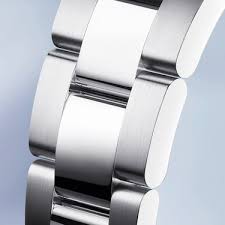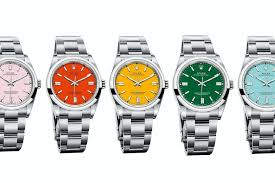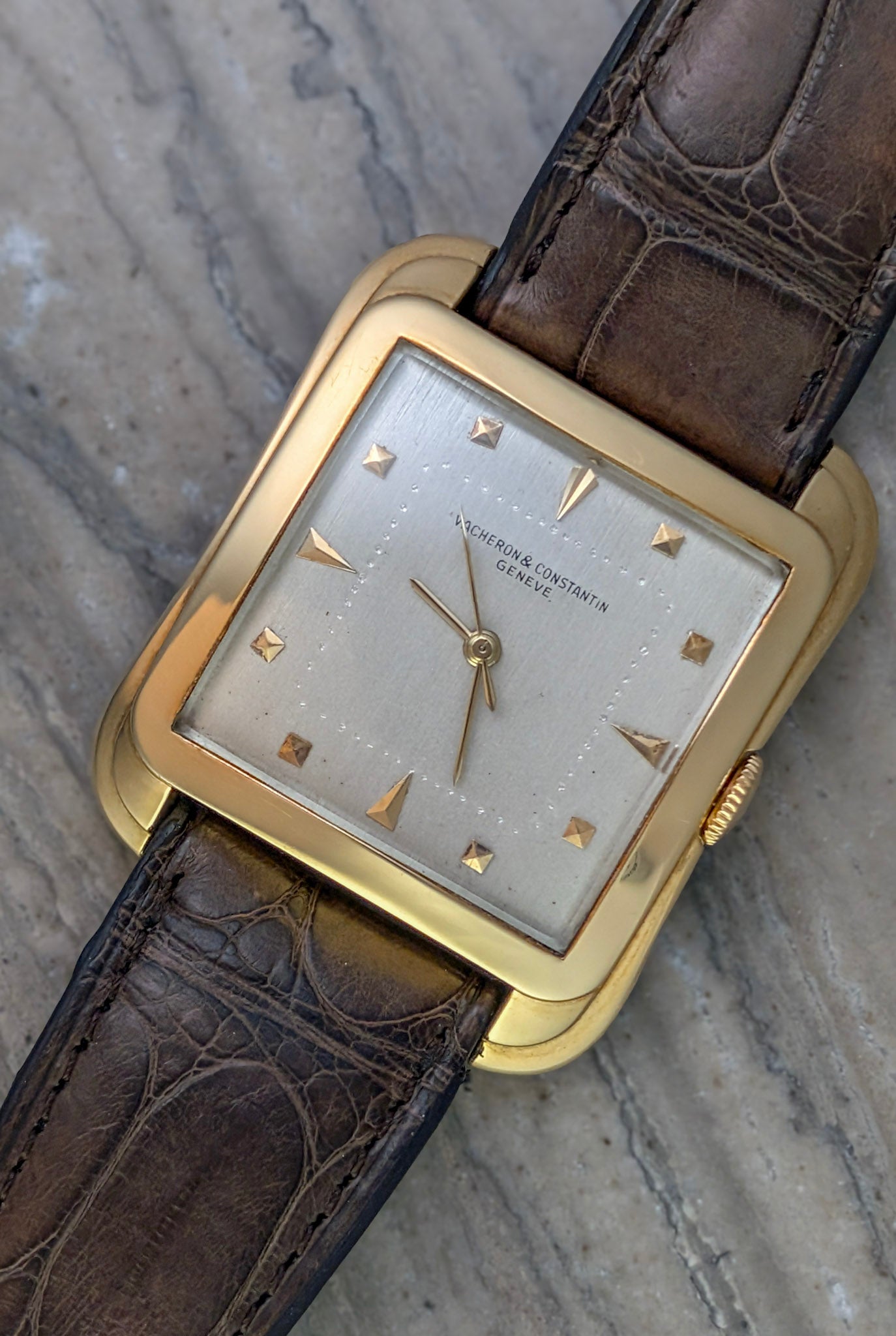
The Definitive History Behind the Cioccolatone Case- Vacheron Toledo Collection
Origins of the Cioccolatone Case
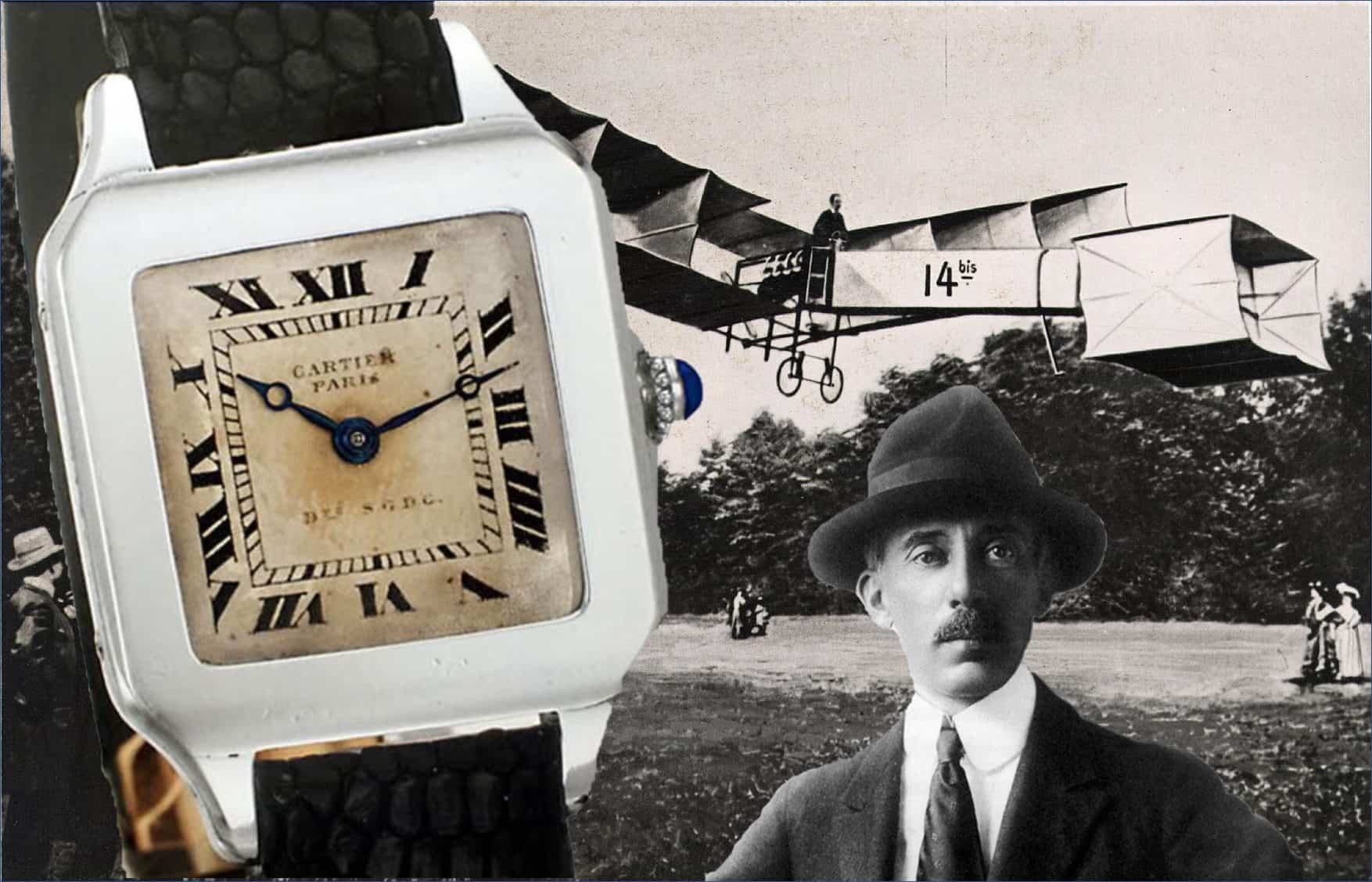
Wristwatch case designs moved beyond simple round shapes early in the 20th century – Cartier famously pioneered squared wristwatches with the Santos in 1904 for aviator Alberto Santos-Dumont. By the mid-20th century, a new design ethos emerged that embraced sleek geometry and modernist aesthetics. In the early 1950s, Vacheron Constantin introduced a bold square-shaped watch with soft, rounded edges and stepped lugs that broke from traditional round cases. Italian collectors nicknamed this distinctive large square case the “Cioccolatone,” meaning “big chocolate,” as its shape resembled a square piece of chocolate. The term was first used around 1952 and originally applied to a Vacheron Constantin triple-calendar moonphase model; it soon became shorthand for any watch with this chunky, chocolate-square form. The Cioccolatone’s initial purpose was largely aesthetic – to capture the post-WWII desire for fresh, modern design – but it also allowed watchmakers to showcase complications (like calendars) in a distinctive case that emphasized both style and functionality. The earliest references included the Ref. 4821 and the notable Ref. 4822, both powered by manual-winding calibers and characterized by their bold, elegant form.
Evolution of the Design Over Time

Ref: 4764 A Platinum Triple Dare Sotheby's
The Cioccolatone style has evolved in size, materials, and details since its 1950s debut. Early examples were considered “oversized” for their era – typically around 33–36 mm wide – giving them significant wrist presence. The cases were usually precious metal; Vacheron Constantin’s 1950s models were mostly 18k yellow gold (with some in rose gold and only a couple of white gold pieces), while Omega produced both steel and gold versions of its square models (steel being more common, with precious metal versions quite rare). Design-wise, 1950s Cioccolatone cases often featured biomorphic curves and stepped or faceted lugs integrated into the square form, reflecting the clean lines of mid-century industrial design. Over time, the basic “chocolate square” silhouette remained recognizable, but watchmakers experimented with nuances – slightly larger dimensions, different lug shapes, or dial styles – to keep the look contemporary. Cushion and square cases had a broad resurgence in the 1960s and 1970s as well, showing up in “TV-screen” dials and other retro designs. By the 2000s, modern manufacturing allowed the Cioccolatone-style case to return with updates like sapphire crystals and higher water resistance, all while preserving the vintage aesthetic. The core evolution has thus been one of refinement: maintaining the iconic rounded-square shape but adapting its scale and construction to modern tastes and technology.
Notable Watch Brands and Models Featuring the Cioccolatone
Vacheron Constantin – The Original “Cioccolatone”
 A mid-1950s Vacheron Constantin reference 4737, nicknamed “Cioccolatone,” showcasing the distinctive square case with curved edges and stepped lugs.
A mid-1950s Vacheron Constantin reference 4737, nicknamed “Cioccolatone,” showcasing the distinctive square case with curved edges and stepped lugs.
Vacheron Constantin is forever entwined with the iconic Cioccolatone case, having introduced this distinctive style in the early 1950s. Defined by its generously proportioned, cushion-shaped square case, the Cioccolatone became a hallmark for the Geneva-based brand, influencing an entire family of remarkable watches. These included elegantly simple, time-only variants—offered with either center seconds or subtle sub-seconds—as well as the more complex and celebrated triple-calendar moonphase model.
Among the earliest and most significant references within this lineage were Ref. 4811 and Ref. 4822, both driven by precise manual-winding movements. The Ref. 4811, powered by the refined Caliber 453, captivated collectors with its sophisticated minimalism, usually crafted in precious metals and accented with discreet baton hour markers. Soon after, Ref. 4822 arrived on the scene, powered by the distinguished Caliber 454. Measuring approximately 36 x 43 mm, its gently curved, squared-off case primarily in luxurious 18k yellow gold quickly became iconic. The refined silvered dial, accented with applied gold hour markers and a striking central seconds hand, elevated its appeal, establishing a new standard in elegance.
These watches were a daring departure for Vacheron, embodying post-war design optimism with their “large, organic square-shaped” cases and smooth, bulging corners. Italian watch media and collectors quickly embraced the design; by 1952 the Vacheron Constantin triple-date moonphase (Ref. 4764) had earned the nickname “Cioccolatone” in Italy. The name stuck, eventually applying to Vacheron’s entire family of similar-shaped models (e.g. Ref. 4737 and others). Produced mostly in yellow gold, with a few in rose gold, these 35–36 mm cases were avant-garde for their time. They combined high complications and fine finishing with an unorthodox case form, making them prized conversation pieces. Today, vintage Vacheron Cioccolatones are highly collectible as emblematic mid-century designs, and the style is regarded as an “icon” of Vacheron’s creative heritage. Vacheron Constantin itself later paid homage to these classics (see Modern Revivals below), underscoring the enduring appeal of the Cioccolatone shape.
Cartier – Early Shaped Case Pioneer
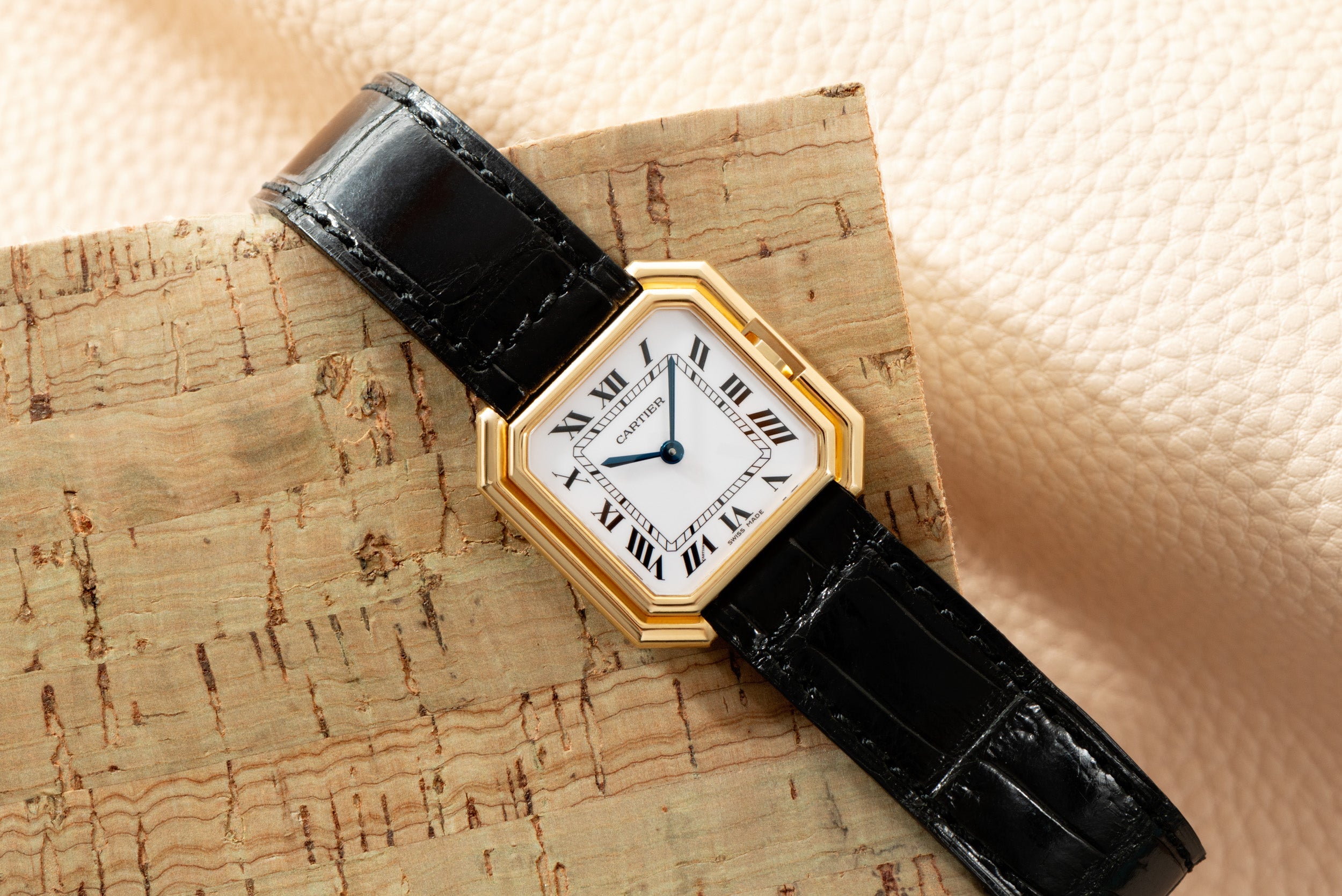
Cartier was a trailblazer in shaped watch cases long before the term “Cioccolatone” existed, and its designs form an important backdrop to this case style’s history. Cartier’s 1904 Santos was the first men’s wristwatch and featured a bold square case, proving that non-round watches could be both functional and elegant. In the 1910s–1920s Cartier introduced many now-classic shapes – the rectangular Tank (1917), tonneau (curved barrel) and cushion forms, and the Cartier Ceinture in 1927, which had a square case with “cut” corners reminiscent of a belt buckle. These early creations established the aesthetic viability of squares and cushions, influencing other makers in the decades to come. By the 1950s, Cartier’s own offerings centered on its established designs (Tanks, Santos, etc.), so Cartier did not produce a model dubbed “Cioccolatone” itself. However, Cartier’s legacy meant that the concept of a stylish square watch was well ingrained in watchmaking culture by mid-century. In fact, the mid-20th-century appetite for creative case shapes that gave rise to the Cioccolatone can partly be credited to Cartier’s pioneering work in shaped watches. Cartier continued to explore and reinvent square/cushion designs over time – for example, the Cartier Santos remained a staple (modernized in the 1970s and beyond), and the Ceinture was reissued in the 1970s as part of the Louis Cartier collection. In recent years Cartier has also released limited-series tributes to historic models (like the Cartier Pebble 1973 remake in 2021, which blends round and square elements). While Cartier’s designs have their own distinct identities, the brand’s influence is evident in the broader popularity of square and cushion cases – including the Cioccolatone style that other brands embraced.
Omega and Universal Genève – 1950s Adopters of the “Chocolate Square”

Omega 3903 Platinum Sotheby's
Outside of Vacheron, a number of other manufacturers in the 1940s–1950s created watches that fit the Cioccolatone mold. Omega in particular produced a few dress watch references with cushiony square cases in the early 1950s, which collectors later nicknamed “Omega Cioccolatone.” For instance, Omega’s Reference 3903 (circa 1950) and Ref. 3950 (circa 1952) were automatic bumper-movement watches featuring a rounded-square 33×33 mm case. Unusually for the era, Omega offered this design in stainless steel in addition to gold – indeed, steel examples of Ref. 3903 are relatively common, whereas solid gold or platinum versions are extremely rare. Italian enthusiasts came to call these Omega models cioccolatone for their resemblance to a square of chocolate, the same term they had applied to Vacheron’s watches. Omega’s take on the style often had prominent lugs protruding from the square case and textured dials (such as waffle patterns), giving them a character distinct from Vacheron’s but still very much in the chocolate-square spirit. Around the mid-1950s, Universal Genève introduced its own line of elegant square watches now often referred to as the “Universal Geneve Cioccolatone.” These appeared between 1955 and 1962 and encompassed seven references, all with automatic movements (some with UG’s famed micro-rotor). Universal’s designs featured expressive stepped bezels and minimalist dials – one could describe them as a “square Polerouter,” since they share design cues with UG’s Gerald Genta-designed Polerouter line. Though produced in limited numbers (total UG production likely under 1,000 pieces), these models reinforced that the Cioccolatone aesthetic was en vogue among leading watchmakers of the 1950s. Both Omega and Universal Genève’s contributions underscore that the Cioccolatone was not a one-brand phenomenon, but a broader design trend in mid-century horology.
Rolex and Other Manufacturers
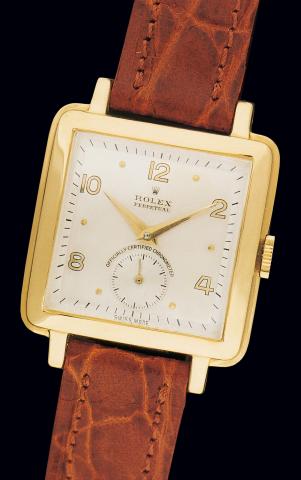
Rolex 4645
Even conservative Rolex experimented briefly with the Cioccolatone-style form. In the 1940s, Rolex produced Reference 4645 – a small (about 30.5 mm) 18k gold square watch with rounded corners, which has since been nicknamed a Rolex “Cioccolatone”. This model (circa 1947) is a rare departure from Rolex’s usual round Oyster cases and suggests that even Rolex recognized the appeal of the chocolate-square shape in the post-war era. While Rolex did not continue developing that design (focusing instead on its iconic round sport watches in the 1950s and beyond), the existence of a Rolex Cioccolatone is a fascinating footnote in the brand’s history. Other notable makers embraced similar case styles as well.

Patek Philippe – The Reference 2486
An especially rare and notable addition to the Cioccolatone lineage is the Patek Philippe Reference 2486, produced in the early 1950s. The Ref. 2486, while limited in production, beautifully captures the Cioccolatone aesthetic with its distinctive rounded square case featuring gently curved edges and elegant stepped lugs. Primarily crafted in yellow and rose gold, the Ref. 2486 combined Patek Philippe’s renowned sophistication and mechanical excellence with the mid-century appeal of cushion-shaped design. Due to its rarity, elegant proportions, and classic Patek Philippe finishing, the Reference 2486 has become particularly prized by vintage watch collectors as one of the most desirable—and elusive—iterations of the Cioccolatone style.
The inclusion of this model highlights the widespread adoption of the Cioccolatone design trend among prestigious manufacturers in the post-war period, reinforcing the aesthetic's importance across leading watchmaking houses and its ongoing cultural significance in horology.
Piaget introduced a luxurious cushion-cornered square design in 1957 with its first Emperador watch, enabled by Piaget’s ultra-thin Caliber 9P. And in Germany, brands such as A. Lange & Söhne had vintage rectangular and square pieces (though mostly pre-war) that align with this tradition. In essence, by the mid-20th century many prominent watch houses – from high-end names to more modest firms – dabbled in these decadent square case designs. Collectors in Italy lumped a variety of such pieces under the affectionate umbrella of “cioccolatone” (a term which came to describe a loose family of watches rather than one specific model). This cross-brand adoption solidified the cultural status of the Cioccolatone case as a classic design trope in watchmaking.
Cultural and Horological Significance
The Cioccolatone case holds a special place in watch culture as a symbol of mid-century creativity and elegance. Culturally, its very nickname reflects the playfulness and passion of Italian watch aficionados – comparing a watch to a piece of chocolate conveys the enjoyment and dolce vita spirit these timepieces embodied. In the 1950s, wearing a Cioccolatone-cased watch made a bold style statement: it signaled an appreciation for cutting-edge design and a willingness to stray from convention. Horologically, these watches demonstrated that case design could be just as much an art as movement design. Brands like Vacheron Constantin used the Cioccolatone to showcase their craftsmanship in shaping and finishing precious metals into complex forms, with seamless curves and steps. Despite their unconventional look, many Cioccolatone watches housed top-tier watchmaking – ultra-thin movements, triple calendar complications, etc. – marrying technical excellence with artistic casework. This fusion of form and function has made vintage Cioccolatone pieces highly sought-after by collectors. They represent the “golden age” of dress watch design, an era defined by iconic pieces that broke molds. Furthermore, the Cioccolatone’s influence can be seen in subsequent design waves. The popularity of cushion and square cases tends to ebb and flow; after the initial 1920s vogue and the 1950s revival, there was another resurgence in the late 1960s and 1970s with funky TV-dial and cushion-shaped watches. Each time, the core appeal is the same: a blend of vintage charm and modernist chic. In modern horology, the Cioccolatone concept continues to inspire. Contemporary “shaped” watches – from Cartier’s Drive de Cartier (a modern curved square design) to various cushion-cased dive watches – owe a debt to those mid-century chocolate-square pioneers. In short, the Cioccolatone case is significant not only as a nostalgic design, but also as a lasting influence that broadened the vocabulary of watch case shapes beyond the round, influencing countless designs up to the present day.
Modern Revival and Homage Editions

Enthusiasm for the Cioccolatone style has led to several revivals and homage pieces in recent years. Vacheron Constantin has twice reintroduced the famed design as part of its Historiques collection. In 2003 Vacheron launched the “Toledo 1952”, a modern triple-calendar moonphase that closely emulated the original 1950s Cioccolatone ref. 4764 (even its name honors the year 1952 when the model gained fame). A decade later, in 2013, Vacheron released the Historiques Toledo 1951, a time-only piece echoing the ref. 4737 variant, right down to its three-hand dial and square case proportions. These reissues were crafted in precious metals (yellow, rose or white gold) and updated subtly for modern wear – for example, using a sapphire caseback and a contemporary automatic caliber – but they preserved the 35–36 mm “square with rounded corners” profile and the elaborate dial details of their mid-century predecessors. Outside of Vacheron, other brands have paid homage to their historical shaped watches. Piaget, for instance, celebrated the 50th anniversary of its 1957 Emperador (a cushion-square design) by unveiling a special collection in 2007 inspired by the original case.The enduring appeal of the Cioccolatone look has also inspired independent and boutique watchmakers. We’ve seen contemporary brands create square-cased dress watches or limited editions that intentionally channel 1950s aesthetics – complete with domed crystals, retro fonts, and the unmistakable rounded square cases – as a tribute to that era’s design language. In essence, the Cioccolatone has proven itself truly evergreen. Decades after its inception, its influence is alive in new releases that either directly reimagine past models or subtly incorporate its design cues. These revival pieces not only honor the original chocolate-square classics but also introduce their charm to new generations of watch enthusiasts, ensuring the Cioccolatone case design remains a living part of horological culture.
References and Citations
-
"Cartier Santos: History of the Original Aviator's Watch," Monochrome Watches, https://monochrome-watches.com/cartier-santos-history-original-aviators-watch/
-
"Vacheron Constantin Cioccolatone – An Icon Explained," Watchtime, https://www.watchtime.com/featured/vacheron-constantin-cioccolatone-icon-explained/
-
"Omega Vintage Watches and the Cioccolatone Case," Omega Watches Archive, https://www.omegawatches.com/vintage-watches
-
"Universal Genève's Square Watches – A Vintage Retrospective," Hodinkee, https://www.hodinkee.com/articles/universal-geneve-square-watches
-
"Rolex Ref. 4645 Historical Overview," Rolex Vintage Database, https://www.rolex.com/vintage-watches
-
"Patek Philippe Reference 2486 Auction Listings," Phillips Auctioneers, https://www.phillips.com/auctions/patek-philippe-ref-2486
-
"Piaget Emperador – History and Anniversary Editions," Piaget Official Archives, https://www.piaget.com/history/emperador-collection
-
"Cartier Privé Collection – Revival of Iconic Designs," Cartier Official Website, https://www.cartier.com/en-us/collections/watchmaking/cartier-prive

